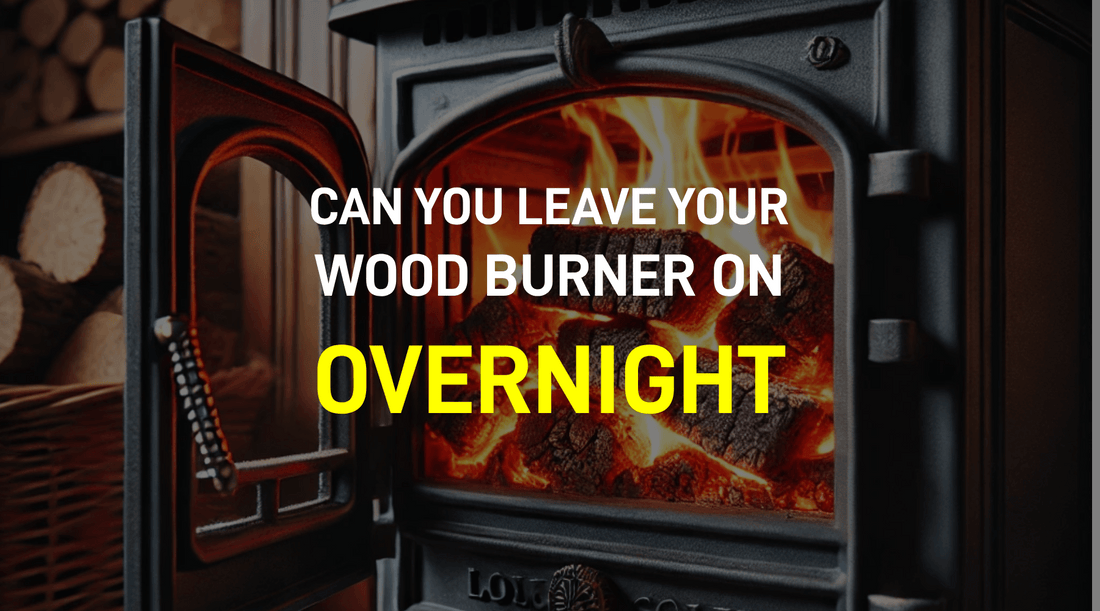
Is It Safe to Leave Your Wood Burning Stove On Overnight?
One of the most common questions Lekto Woodfuels customer support staff get asked by customers is whether it's safe to leave their log burner on when they go to bed. On one hand, it seems like a no-brainer. After all, what can be more convenient than putting a few long-burning Night Briquettes into your stove as you go to bed and having them still burning when you wake up in the morning?
But is doing so actually a good idea? And what safety guidelines must be followed to ensure that you're not compromising on fire safety if you end up leaving your stove on as you sleep.
In this expert-written guide, we'll cover all you need to know about leaving your wood stove burning overnight. In this article, you will find out everything from essential tips to common mistakes to avoid to the best practices for maintaining your stove.
Let's begin!
Is It Safe to Leave Your Wood Burning Stove On Overnight?
Yes, provided you take all of the necessary safety measures, it is indeed possible to keep a wood-burning stove burning all night safely. While it is always better to keep a fire under constant surveillance. However, doing so requires careful preparation, and there are important safety steps that you must take to reduce any potential risks. Here are some of these steps.

Steps to Safely Leave Your Wood-Burning Stove On Overnight
Step 1: Make Sure Your Log Burner Is in Good Repair
The most important thing for fire safety is being absolutely sure that your stove is in good repair. Having your chimney swept at least once a year is vital to prevent the build-up of creosote and other harmful deposits that accumulate over time. When left unattended, these deposits can permanently damage your burner and even lead to chimney fires. A certified chimney sweep will also be able to assess the condition of your stove and perform repairs if necessary.
To learn more about log burner maintenance, read our Ultimate Guide to Hiring a Chimney Sweep.
Step 2: Remove Flammable Objects From Your Burner
Another must-do for fire safety is to make sure there are no flammable objects next to the stove. This includes rugs, cardboard boxes, magazines, newspapers, cans of WD-40, air fresheners, and even spare logs and firelights. Even though the chances of these items catching fire are low if the stove door is closed, they are never zero, as stove glass may crack unexpectedly due to internal stresses. Ideally, you should invest in a fireguard to safeguard your home, pets, and children from fire-related injuries.
Curious about other wood burner accessories? Read our article on the Top 7 Must-Have Wood Burner Accessories.
Step 3: Lower Your Wood Burning Stove's Air Intake
Before you leave your stove burning unattended for a prolonged period of time, adjust the air vents on your stove to limit the air supply. Fire requires oxygen to burn intensely, so reducing the airflow will allow the fire to burn in a slow and consistent fashion, which reduces the risk of it flaring up unexpectedly.
Doing so will not extinguish the fire. In fact, if you've read our Ultimate Guide to Lekto Night Briquettes, then you know that long-burning softwood logs perform best when the airflow controls are set to the minimum.
Step 4: Only Use Ready to Burn Logs and Briquettes
Wet wood can smoke, smoulder, split, and crack when burned, which is why it is important to only use Ready to Burn certified firewood logs and wood briquettes. Avoid burning green or unseasoned wood, as it creates more smoke and creosote deposits, which may cause chimney fires. Defra's Ready to Burn standard guarantees that the wood fuels you are buying burn cleanly, safely, and efficiently.
Here is a list of Ready to Burn-certified products from Lekto:
- 8-Hour Night Briquettes
- Hardwood Heat Logs
- Universal Fire Logs
- Sawdust Briquettes
- Nestro Softwood Logs
- Pini Kay Eco Logs
- Kiln-Dried Ash Logs
- Kiln-Dried Birch Logs
- Kiln-Dried Oak Logs
- Kiln-Dried Wood Kindling
Want to learn more? Read All You Need to Know About Defra's Ready to Burn Standard.
